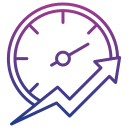Remote Work Productivity Tools
Communication Platforms
Instant Messaging Solutions
Instant messaging solutions provide fast and efficient channels for exchanging ideas, quick updates, and informal conversations among team members. Unlike traditional email communication, instant messengers allow colleagues to create chat groups, share files, and react instantly to messages, cultivating a dynamic and connected workplace culture. These tools often integrate with other applications, making it easy to reference documents, manage tasks, or set reminders directly within the chat interface. Security features such as end-to-end encryption and user access controls ensure the confidentiality of sensitive business discussions, providing peace of mind for distributed teams.
Video Conferencing Software
Video conferencing software has become indispensable for remote teams by replicating face-to-face interactions in a digital setting. These platforms support high-definition meetings, webinars, and collaborative sessions with screen sharing, virtual whiteboards, and breakout rooms. Video conferencing is essential for maintaining engagement, building rapport, and facilitating interactive discussions, especially when teams are spread across different time zones. Superior audio and visual quality, ease of use, and robust security features are all factors that teams consider when selecting a video conferencing solution. Reliable connectivity ensures smooth communication, preventing misunderstandings and delays in decision-making.
Audio Call Applications
Audio call applications cater to teams that may not always need video interaction but still require clear verbal communication. These tools offer convenient ways to conduct voice meetings, brainstorm ideas, or provide verbal feedback without bandwidth-heavy video streams. Features such as call recording, noise cancellation, and integration with scheduling tools are often included to enhance the call experience. Audio calls also provide flexibility for remote workers who might be on the move or prefer audio-only communication for specific scenarios. A dependable audio call tool reduces communication barriers and ensures team members remain aligned regardless of physical location.
Project Management Tools
Task tracking platforms empower teams to assign responsibilities, set priorities, and monitor progress toward project goals. These tools help break down complex projects into manageable tasks with detailed descriptions, due dates, and dependencies, keeping everyone aware of their individual contributions. Dashboards and visual progress indicators offer quick overviews of what’s pending, in progress, or complete. Automated notifications and reminders ensure nothing slips through the cracks, helping teams overcome the challenge of working asynchronously across different schedules or time zones. Over time, analytics from these platforms provide valuable insights into team performance and productivity trends.

Time Management Solutions
Time Tracking Applications
Time tracking applications record how much time is spent on tasks, projects, and client work, providing clear visibility into daily activities. These tools often include features like timers, manual entries, and detailed reporting dashboards. For managers and freelancers alike, they enable accurate billing, resource allocation, and performance evaluation. Time tracking data can also reveal patterns in productivity, highlighting areas for improvement or periods when additional support may be needed. By understanding how work hours are invested, remote teams can optimize schedules, adjust workloads, and set realistic expectations for project timelines.
Scheduling Assistants
Scheduling assistants streamline the process of booking meetings, managing appointments, and coordinating availability among remote teammates. They often integrate with calendar apps, providing real-time visibility into open time slots and avoiding scheduling conflicts. These tools minimize the back-and-forth often required when arranging discussions across time zones, automatically suggesting suitable options for all participants. Some scheduling assistants also offer features like automated reminders and timezone conversions, making it easier to organize both internal and client-facing engagements. Efficient scheduling promotes smooth collaboration and ensures essential touchpoints are never missed.
Focus and Pomodoro Timers
Focus and Pomodoro timers are designed to boost concentration by structuring work into intervals, such as the popular 25-minute work blocks followed by short breaks. These tools help remote workers resist distractions, maintain sustained attention, and avoid burnout during long hours at home. With customizable intervals and automated break reminders, users can tailor the systems to fit their personal productivity preferences. Over time, focus timers help develop effective work habits, encourage deep work, and improve overall output. Remote teams using these timers can also synchronize group work sessions, fostering a sense of camaraderie and shared momentum.

Document Collaboration
Cloud-based Document Editors
Cloud-based document editors allow multiple users to work on the same document simultaneously, viewing each other’s changes in real-time and leaving contextual comments for feedback. These editors eliminate the need for emailing file attachments, reducing confusion and ensuring everyone is always working from the latest version. Access and editing permissions can be customized, providing secure yet flexible collaboration spaces. Integrated history tracking allows users to revert to previous document versions if needed. These capabilities make cloud-based editors a must-have for distributed teams working on reports, proposals, or creative writing projects.
Version Control Systems
Version control systems track changes to documents and source files, protecting the integrity of a team’s work as it evolves over time. These systems enable teams to manage multiple iterations, merge contributions, and resolve conflicts without losing important progress. For technical teams, version control is especially vital in software development, but its applications extend to any content that undergoes frequent updates. Automated backups and thorough change logs provide accountability, allow easy restoration of previous versions, and empower teams to experiment with new ideas without fear of irreversible mistakes. The result is a safe, organized digital workspace where collaboration thrives.
Secure File Sharing Platforms
Secure file sharing platforms ensure that sensitive documents can be transferred, accessed, and stored without compromising confidentiality or compliance. These tools offer encrypted links, password protection, and permission controls to regulate who can view, edit, or download files. Tracking capabilities provide visibility into when files are accessed or modified, promoting transparency and accountability. As remote teams handle confidential contracts, client data, or intellectual property, robust security features become non-negotiable. Seamless integration with other collaboration tools enhances productivity, while detailed audit trails and compliance certifications provide added assurance for privacy-conscious organizations.
Knowledge Management
Internal Wikis
Internal wikis provide living repositories where team members can document processes, guidelines, frequently asked questions, and other essential knowledge. These wikis make key information discoverable and encourage contributions from all employees, ensuring that documentation remains relevant and comprehensive. Built-in search and categorization features allow team members to quickly find answers, saving time and reducing dependence on direct messaging for routine queries. Collaboration and version history features ensure content accuracy, while granular access controls protect sensitive or proprietary information. Internal wikis promote self-service support and foster a culture of shared learning among remote teams.


Virtual Whiteboards
Virtual whiteboards provide an interactive canvas for teams to sketch diagrams, map out processes, or visualize concepts in real-time. These tools offer a variety of drawing, annotation, and sticky note options, allowing participants to contribute ideas simultaneously or asynchronously. Virtual whiteboards often include export and sharing features, enabling easy documentation of brainstorming outcomes and ongoing reference. Their dynamic visual format fosters engagement and creativity, breaking down communication barriers that might arise in chat or video calls alone. For remote teams, virtual whiteboards are valuable spaces for sentiment mapping, planning sprints, or running collaborative workshops.

Mind Mapping Tools
Mind mapping tools support nonlinear thinking and the exploration of related concepts in an organized, visual manner. Remote workers can create branches and sub-branches to develop ideas, highlight connections, and prioritize tasks. Interactive features such as drag-and-drop node reordering, color-coding, and integration with task management systems enhance flexibility and clarity. Mind maps help teams distill complex problems into manageable elements, making it easier to communicate strategies and align on project goals. By encouraging all members to contribute, these tools foster inclusivity and collective problem-solving, turning remote brainstorming into actionable plans.
File and Resource Management
01
Cloud Storage Services
Cloud storage services provide centralized, scalable, and secure environments for storing documents, media files, and resources crucial for team operations. These platforms support instant file syncing across devices, making sure employees always have access to the latest documents from anywhere in the world. Automated backup features protect critical information from accidental loss or device failure, enhancing business continuity. Sharing and permission settings allow teams to collaborate efficiently while maintaining strict access controls. Integration capabilities with productivity and collaboration apps further streamline workflows, enabling seamless, frictionless data management for remote teams.
02
Digital Asset Management Systems
Digital asset management systems organize, tag, and deliver digital content including images, videos, and design files, making them easily searchable and retrievable by remote teams. Advanced metadata indexing, categorization, and keyword tagging help employees locate assets quickly, saving valuable time. These systems provide access management, usage tracking, and version control, ensuring that only authorized individuals can modify or distribute key files. Especially for marketing or creative teams, digital asset management tools ensure brand consistency by keeping logos, templates, and campaign materials up-to-date and accessible, regardless of where team members are located.
03
Resource Booking Tools
Resource booking tools help remote workers reserve access to physical or virtual resources, such as meeting rooms, IT equipment, or shared digital licenses. These tools offer transparent calendars, conflict alerts, and approval triggers to prevent double-bookings or resource shortages. For distributed teams operating in hybrid or hoteling office setups, resource booking systems support flexible work arrangements and optimize resource utilization. By providing clear overviews and automated booking processes, these tools reduce logistical friction and ensure that the right resources are always available when needed, supporting seamless remote work operations.
